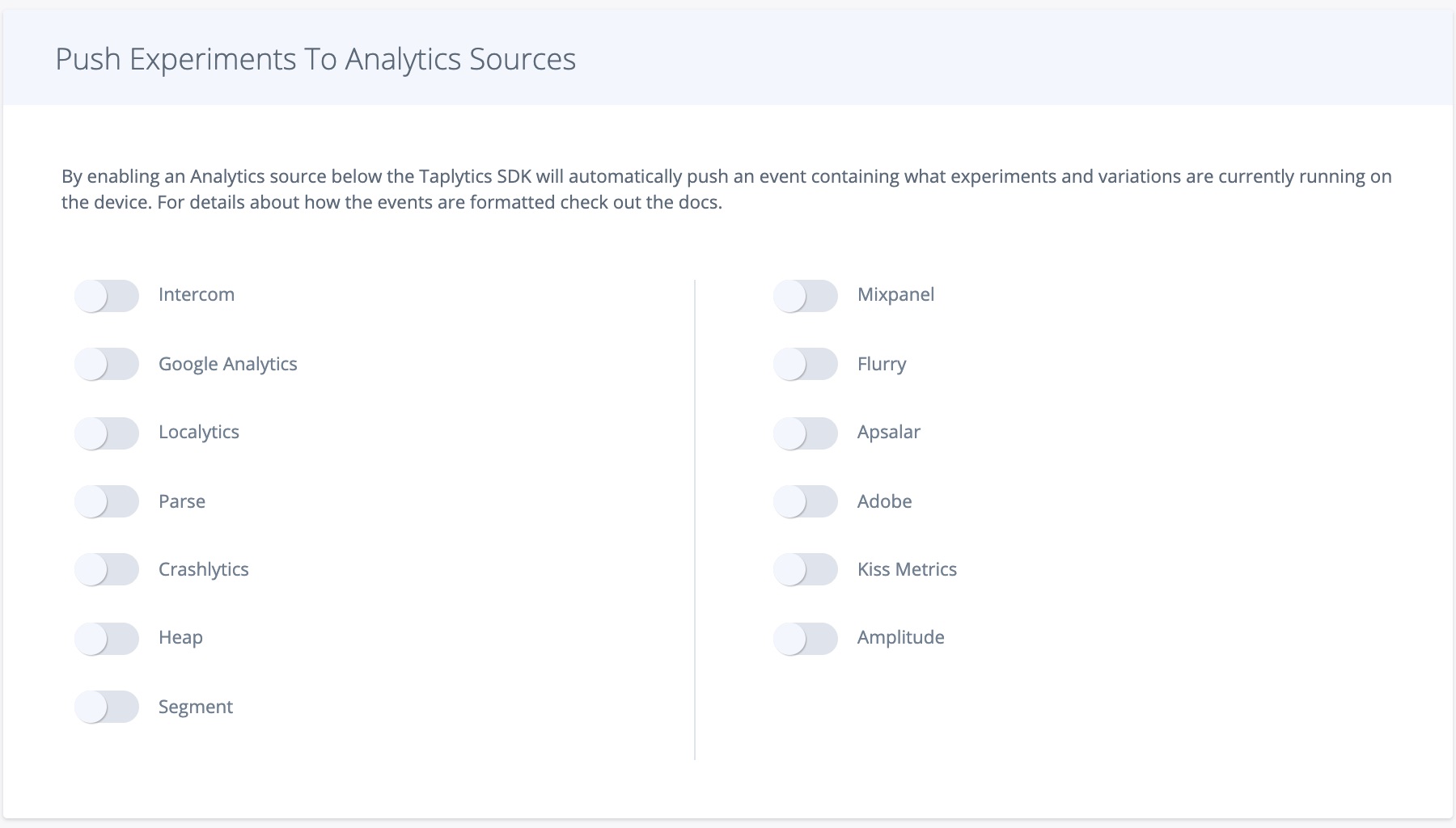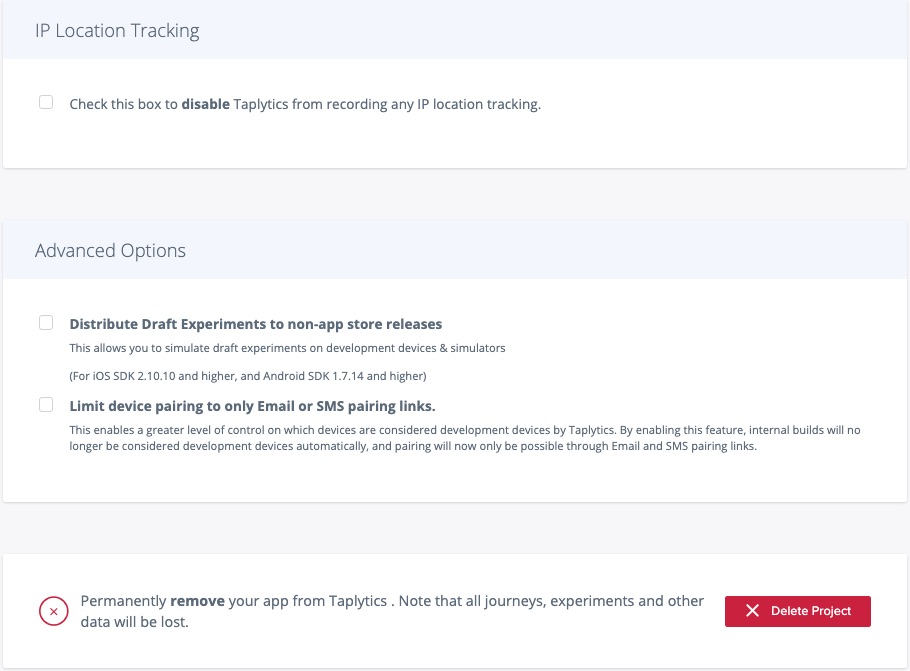Project Settings
The Settings page is comprised of three different sections: Project Settings, Device Settings, and Push Notification Settings. Each section contains different global parameters that control your project's configuration, which we will outline below.
Project Info
The Project Info section allows users with the appropriate Settings permissions to edit the Project Name, and Project Code. The Project Code is a unique 3-character identifier which will then appear in shortened URLs for different links within a project.

Project Keys
Under this section, you will see different keys and schemes that are unique to your project.
These keys are used for both the SDK and API. Examples include the initialization of the Taplytics SDK(s) and the authentication of calls made to the Taplytics API.
The use of each item in this list is covered in more detail in our technical documentation.

PartnerJS (Advanced)
This section allows for the input of custom Javascript code.
Once the custom Javascript code is added, the script will run prior to the Javascript SDK, every time it is loaded by your site. The custom code entered in this box is subject to basic JS validation, however, it must still be used with caution.

Examples of custom Javascript use-cases:
- Debugging; setting cookies for testing purposes which can be explicitly targeted during standard quality assurance audits.
- Advanced implementation of custom events as it pertains to goal creation.
- Extended support for single-page app experiments.
Push Experiments to Analytics Sources
This section contains toggles to enable the sending of experiment and variation data to our available 3rd party integrations. To learn more about this feature along with the format in which the data is sent, please refer to 3rd Party Integrations.

Additional Options
Last, the Additional Options section provides control over miscellaneous project settings such as IP Location tracking, which disables the Taplytics SDKs from recording IP addresses from end users. When enabled, location-based built-in segmentation filters such as City, Region, and Country will no longer be available for campaigns.

Updated about 4 years ago
